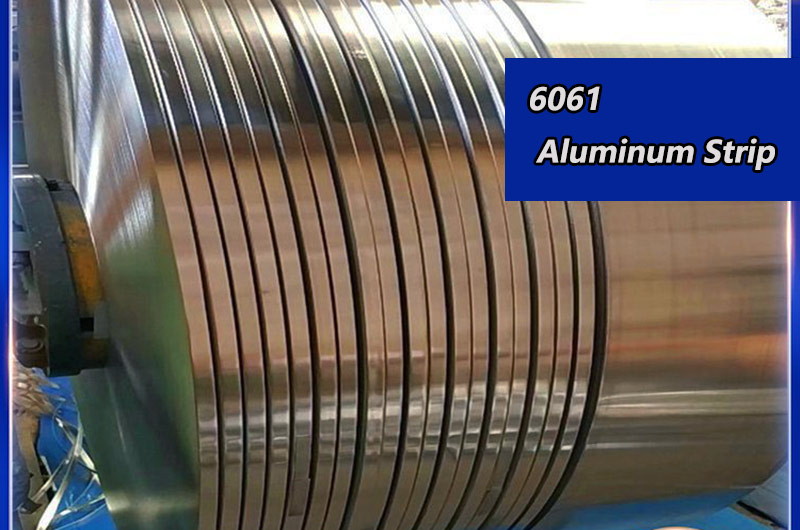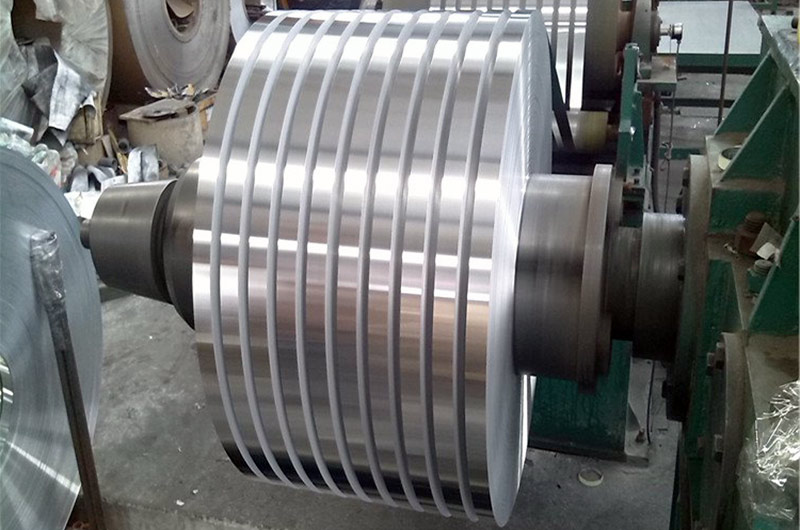- 6061 Aluminum Strip Brief Introduction
- Why Choose 6061 Aluminum Strip
- 6061 Aluminum Strip Chemical Composition
- 6061 Aluminum Strip Mechanical Properties
- 6061 Aluminum Strip Physical Properties
- Heat Treatment
- Forming and Welding
- Surface Finish
- Standard Specifications
- 6061 Aluminum Strip Application
- 6061 Aluminum Strip Disadvantages
- When to Choose 6061 Aluminum Strip
- Hot Topics About 6061 Aluminum Strip
6061 Aluminum Strip Brief Introduction
6061 aluminum is a versatile alloy known for its excellent mechanical properties and corrosion resistance.
The 6061 aluminum strip is a flat, narrow piece of material cut from a larger sheet or coil of 6061 aluminum. It is commonly used in various applications where a combination of strength, weldability, and corrosion resistance is required.

Why Choose 6061 Aluminum Strip
- High Strength: 6061 aluminum strip offers good strength, making it suitable for structural applications.
- Corrosion Resistance: It exhibits excellent corrosion resistance, enhancing its durability in various environments.
- Weldability: 6061 is easily weldable, allowing for the fabrication of complex structures.
- Versatility: The alloy is versatile and finds application in a wide range of industries.
- Heat Treatability: 6061 is heat-treatable, allowing for the adjustment of mechanical properties for specific applications.
6061 Aluminum Strip Chemical Composition
The chemical composition of 6061 aluminum typically includes:
- Silicon (Si): 0.40-0.8%
- Iron (Fe): 0.7%
- Copper (Cu): 0.15-0.40%
- Manganese (Mn): 0.15%
- Magnesium (Mg): 1.0-1.5%
- Chromium (Cr): 0.04-0.35%
- Zinc (Zn): 0.25%
- Titanium (Ti): 0.15%
- Other elements: 0.05% each, 0.15% total.

6061 Aluminum Strip Mechanical Properties
- Tensile Strength: 310 MPa
- Yield Strength: 276 MPa
- Elongation: 8%
- Hardness (Brinell): 95
6061 Aluminum Strip Physical Properties
- Density: 0.098 lb/in³ (2.7 g/cm³)
- Melting Point: 1, 170°F (632°C)
- Thermal Conductivity: 170 W/m·K
- Electrical Conductivity: 43% IACS (International Annealed Copper Standard)
Heat Treatment
6061 aluminum strip can be solution heat-treated and artificially aged to achieve the desired strength and hardness.
Forming and Welding
It has good formability in the annealed condition.
It can be welded using various methods, such as TIG or MIG welding.
Surface Finish
The surface of the strip can be mill finished, anodized, or coated for additional protection.

Standard Specifications
6061 aluminum strip typically conforms to various international and industry standards, such as ASTM B209 for aluminum and aluminum-alloy sheet and plate.
6061 Aluminum Strip Application
6061 aluminum strips find applications in:
- Aerospace components
- Structural components
- Automotive parts
- Electronic hardware
- Marine fittings
- Sports equipment
- General machinery parts
6061 Aluminum Strip Disadvantages
Cost: 6061 aluminum can be more expensive than some other alloys due to its alloying elements.
Not as Corrosion-Resistant as Some Alloys: While it has good corrosion resistance, it may not be as corrosion-resistant as other aluminum alloys in certain environments.
When to Choose 6061 Aluminum Strip
Choose 6061 aluminum strip when:
- High strength is required.
- Weldability is a crucial factor.
- Corrosion resistance is sufficient for the application.
- Heat treatability is needed for specific properties.
Hot Topics About 6061 Aluminum Strip
Current hot topics about 6061 aluminum strip might include discussions on:
- Emerging applications and industries adopting 6061 aluminum.
- Advanced processing techniques for improving properties.
- Market trends and price fluctuations.
- Environmental considerations and sustainability in the use of 6061 aluminum.
For the latest and most specific information on 6061 aluminum strip, it's recommended to check industry publications, forums, or news sources for the most recent discussions and developments.
